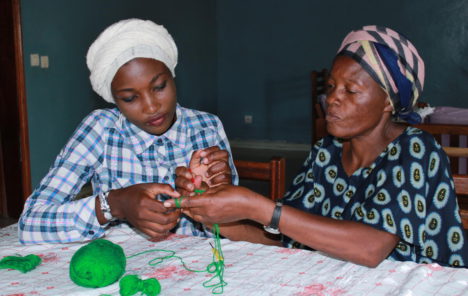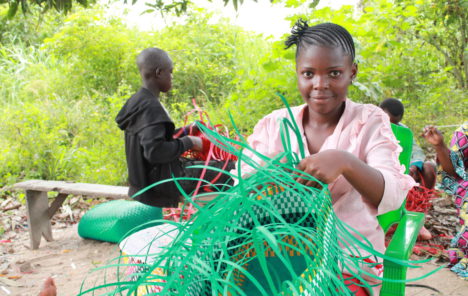The Democratic Republic of Congo (the DRC), home to an estimated 93 million people, is currently experiencing one of the largest humanitarian crises in the world.
Although the country is rich in natural resources, one in six Congolese people live in extreme poverty and 43% of children in the country are malnourished. [National Institute of Health]
In addition, according to the World Bank, roughly one in ten children dies before reaching the age of five.
The country has a multitude of complex difficulties, which continue to escalate and has led to a humanitarian crisis causing over 6.9 million people to be displaced. This is putting many children in danger of separation from their family, posing risks to their safety and wellbeing and opening them up to trafficking and exploitation.
1 in 6 Congolese live in extreme poverty
6.9million people are displaced
43% of children are malnourished
[UN data]
Issues facing people living in the Democratic Republic of Congo
The people of the Democratic Republic of Congo are tackling multiple issues, each of which are worsening overall living conditions and quality of life in the country and creating a complex net of individual crises. In turn, each issue contributes negatively to the other.
With a long history of unrest and instability, the country has been at breaking point for some time. However, with the elevated cost of imports and a depreciating currency, inflation is rising at a faster pace, and the people of the DRC are in greater need than ever.
Now, poverty, lack of access to water and food, disease, lack of transport, conflicts both past and present, lack of education, climate disasters, poor sanitation, and lack of healthcare, all contribute to a life expectancy of more than 10 years below the global average, according to data from World Health Organisation.
In addition, due to broader health, social and economic impacts of COVID-19, vulnerable populations – particularly women and children – are facing devastating consequences. Children are now less likely to attend school or have access to adequate nutrition and health care.

Widespread poverty
Development since the Congo Wars in the 1990s has been hindered by health crises, largely due to limited access to sanitation and safe drinking water.
In 2022, nearly 62% of Congolese, around 60 million people, lived on less than $2.15 a day [The World Bank]
Despite reforms to improve the economic situation, and despite its role as producer of major global resources*, the Democratic Republic of the Congo remains one of the poorest countries in the world.
*The DRC plays a crucial role as the world’s primary source of cobalt, a key ingredient in batteries for devices like phones, electric cars, and e-cigarettes.
Internal displacement
The Democratic Republic of the Congo has the second largest displaced population in the world.
Conflict, combined with continued mining, is pushing the number of people forced to flee their homes up, currently sitting at a record 6.9 million people, according to recent UN data.
Most internally displaced Congolese people live in makeshift camps and urban areas with poor sanitation and health care. Outbreaks of Ebola and cholera also occur in these provinces.
In these circumstances children, particularly those without parental care, are in even greater danger. They risk being recruited as child soldiers or falling victim to trafficking and exploitation.
Food insecurity
One quarter of the population of the Democratic Republic of the Congo experience food insecurity.
The food crisis is partly due to violence-induced displacement and collapsing transport links, which greatly weaken agricultural production.
Families across the country are unable to access healthy food and 43% of children in the DRC are malnourished.
Even where food is available, high prices and falling incomes mean many are unable to afford nutritious meals.
Further impact on children in the Democratic Republic of Congo
As is often the case in these situations, it is children who suffer most, in particular those who have lost, or are at risk of losing, parental care. And of the country’s 93 million population, over half are children under 18.
UNICEF estimates that 40 million children in the DRC are multidimensionally poor* (74.6% of children under 17), while 11.5 million need critical humanitarian assistance. [UNICEF, Country Office Annual Report 2021 Democratic Republic of the Congo]
Furthermore, in 2014, approximately 40,000 children worked in mines according to UNICEF. And many of them were working without equipment to protect them from issues including lung disease and skin disease.
*Multidimensional poverty recognises that a person who is poor can suffer multiple disadvantages at the same time, in addition to monetary poverty, for example poor health or malnutrition, lack of clean water or electricity, or lack of education.

How SOS Children’s Villages is helping
Every child has the right to be safe, loved and protected so that they may thrive, not just survive.
Together, with your help, we’re working hard to support children and families in the Democratic Republic of Congo.
SOS Children’s Villages has been supporting children and young people without parental care, or at risk of losing it, in the Democratic Republic of the Congo since 1989.
How SOS Children’s Villages has helped so far:
Since 1989, SOS Children’s Villages has been supporting children and young people without parental care, or at risk of losing it, in the Democratic Republic of the Congo.
- 451,890 adults and children are supported in the community
- 211,930 children learn at SOS Children’s Villages kindergartens and schools
- 624,690 medical services were made possible
- 55,930 children who have lost parental care are protected from violence and exploitation in our care.
- 22,300 young people are supported on their way to independence through youth training and employability programmes.
SOS Children’s Villages in the DRC also supports children and families during emergencies including escalating conflicts, natural disasters, and climate-related emergencies.


Jeanne (pictured on the left of the first image) is practicing knitting with her caregiver. She hopes to become good enough to use her skill someday to help her become independent.
Children in our care have a chance to try a variety of crafts and develop in trades like tailoring, mechanics and carpentry.
Learning to make baskets (as pictured in the second image) is one of the many useful skills children and young people in our care develop in order to become independent when they grow up.
How you can help children in crisis
Your support can make a difference! By giving what you can today, you help us care for and protect children and empower rapid and crucial responses during crises. Your donation enables us to protect children from danger, providing them with urgent humanitarian aid and helping ensure their long-term wellbeing.
